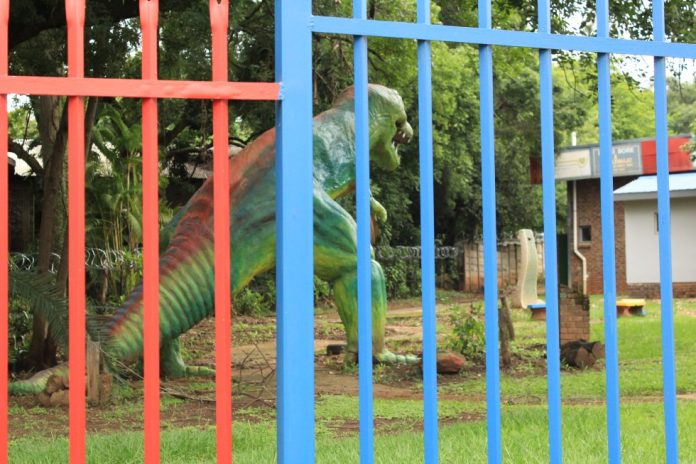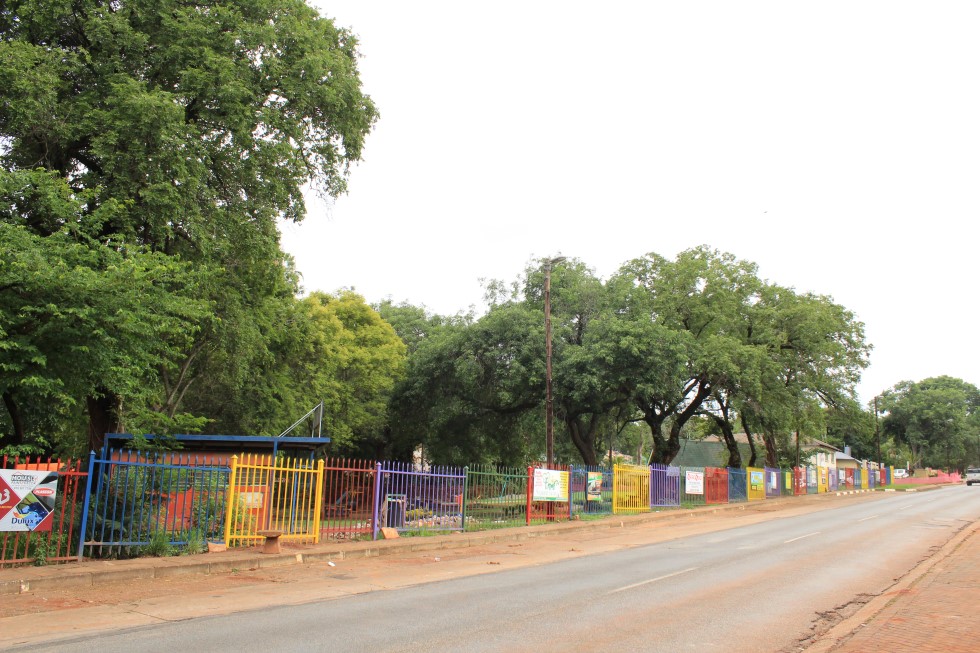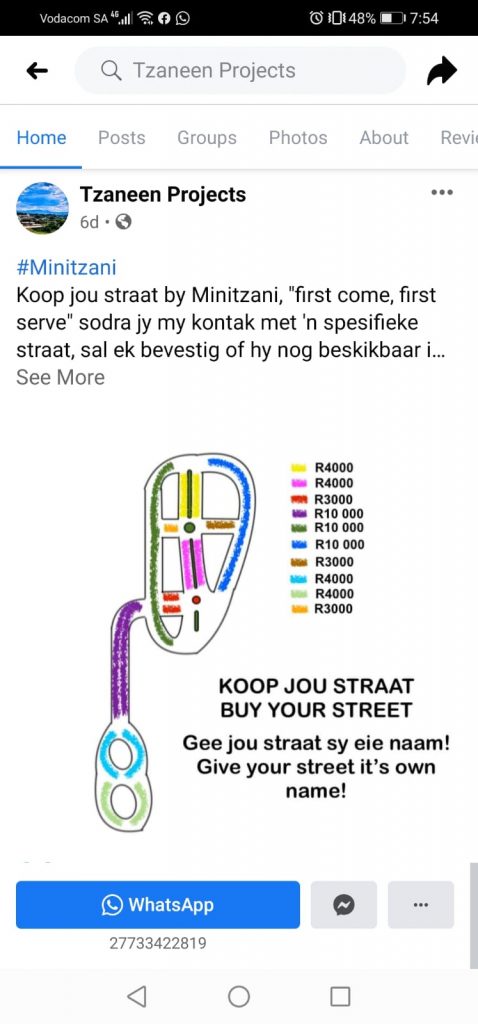
Not all residents of Tzaneen share the current enthusiasm with which the public park in Boundary Street has been fenced off through a project launched by a private individual. Some residents have voiced their concerns over issues related to not only the aesthetics but the ownership, access, and finances of the now completely fenced-in park.
Minitzani Park was an open, publicly accessible park and playground freely available to any member of the public for many years. The grounds are municipal property and therefore the maintenance of the grounds and the apparatus contained within it, are the responsibility of the Greater Tzaneen Municipality (GTM). Residents pay monthly rates and taxes to the municipality who are supposed to apply these funds to the upkeep of their properties which include infrastructure such as the roads, electrical grid, water supply lines and public parks.
Earlier this year, it became apparent that the municipality was failing in its mandate to keep the park and playground in good nick. While the park grounds were regularly landscaped, the swings and slides were in serious need of repair and the familiar landmark T-Rex needed a paint job. There was also an issue with loitering and allegations of drug dealing in one section of the park. This prompted resident, Zantelle Ras, to establish the Tzaneen Projects initiative with their first project being the complete repair and upgrading of Minitzani Park.

For the most part the project received praise as beautifications started taking shape. Members of the community joined in and repaired and painted the swings and rides, and even ol’ Rex received a makeover. The project received applause from all sectors of the community until one day a palisade fence was erected around the entire park. Soon after the erection of the fence, community members were asked to join in painting the structure. Soon after the paint had dried, the first of the advertising signboards appeared. Soon after this, more signboards made their appearance and today, a total of 31 company advertisement boards adorn the brightly coloured fence. A single access point was created in the form of a pedestrian gate which is reportedly locked up at night and opened again the following morning.
On their Facebook page, Tzaneen Projects, a notice appeared which detailed the map of Minitzani playground’s mini roads network. The roads were coloured in and a message read “buy your own street, give your street a name!” The pricing for the purchase of the streets ranged from R3 000 to R10 000. Combined it equates to total of R55 000. Furthermore, on the page is a new initiative where companies are encouraged to choose a picnic bench area, decorate it to their taste and brand it.

We received some questions from residents which we compiled into a list and sent it off to Zantelle and to the GTM Municipal Manager, Thapelo Matlala for clarity. “Morning. I have asked for a report on the matter. Once I have the report, we will respond promptly,” said Matlala.
Zantelle opted to post the questions onto the Tzaneen Projects Facebook page a few minutes before our deadline yesterday without informing of us of this, and despite a message earlier in the day that she would send us the answers to our inquiry later in the evening. To our question regarding the costs for the advertisement boards, she responded by saying that all sponsors involved in the project were entitled to an advertisement board on the fence. “The size of the board depends on the size of the sponsorship which is divided into two sizes. For sponsorships smaller than R10 000 a 930mmx930mm signboard was available and for sponsorships larger than R10 000 signboards of 2mx930mm was available. These boards can stay on the palisades for as long as the sponsor wishes to remain involved in the maintenance of the project. If a sponsor no longer wants to be involved in the maintenance of the project, we ask that the board be removed to make space for the next sponsor.”
Zantelle explained that sponsorship consists of material, labour or financial contributions. She stated that where possible, the sponsors paid the funds for the material directly to the suppliers, but that any extra funds were paid into the Tzaneen Swaarvoertuie account from where it is then deposited into various suppliers’ accounts. We asked her on which statistics she based the claim that the park was unsafe and needed to be fenced in, to which she replied “I don’t work on statistics, nor on threats. I believe that God gave me the instruction to be the change. Everyone always has opinions and say that things need to change, but nobody ever takes the initiative to do something. So I’m doing something. All I ask is that everyone takes hands and works together to be the change the world needs.”
Ras explained that the idea to “sell” the streets inside the park was an initiative by a sponsor to raise funds to complete the project. According to her, there is still material that needs to be purchased and labour that needs to be paid for. “During the Covid pandemic many businesses were unable to assist financially and some sponsors were forced to withdraw. Those holes now need to be filled.”

The full set of questions and Zantelle’s response can be viewed on the Tzaneen Projects Facebook page. We have compiled further questions for Zantelle and the GTM, which we will send to both parties for publication in next week’s edition. We would like clarity on which municipal official signed off on the project, and who will be taking responsibility in the event that a child should be injured on any new structures erected at the playground, considering that according to Ras, no safety inspectors have visited the site. We have also requested clarity on whether or not there is a fee Tzaneen Projects would have to pay to the municipality, for consent to display advertisement boards on the fence surrounding the park, as per the municipal bylaws. Lastly, we sought clarity from the municipality on consent to private individuals to “rent” out municipal grounds as fundraising projects. We will publish their feedback in next week’s edition.
























































